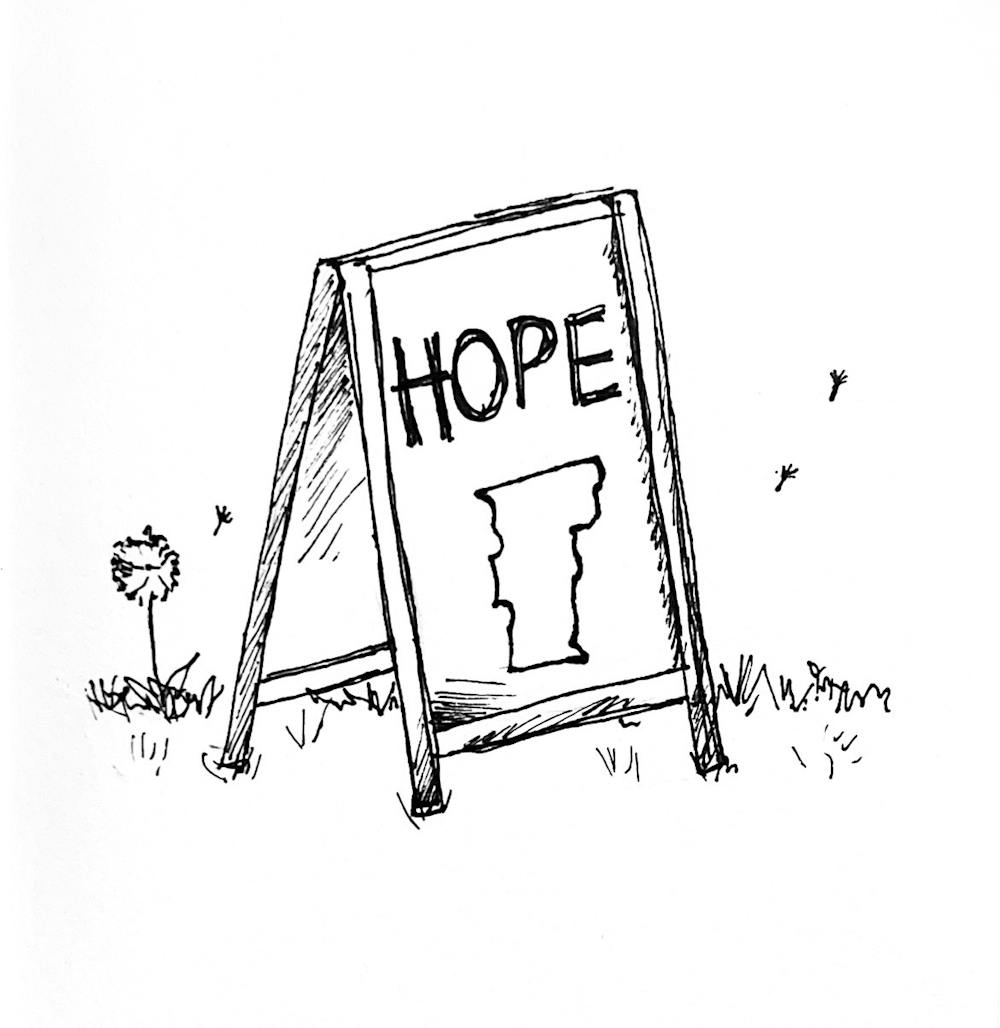In the span of twelve years, I have seen two catastrophic flooding events in Vermont: Tropical Storm Irene in 2011 and the flooding of this past summer in 2023. Both floods were incredibly devastating, and much of the recovery efforts were made possible by the strength of local communities and the amazing work of volunteers.
This July, I was traveling out of the country when I received the alarming text from my mom: “We are dry here. Flooding in a lot of VT.” Thousands of miles away in a completely different time zone, I opened my phone to see images of the floodwaters across the state and felt instantly transported back to Irene twelve years ago.
In late August of 2011, in the few days before Tropical Storm Irene hit Vermont, I was ten years old and about to start my last year of elementary school. I remember being really nervous about how the incoming hurricane-turned-tropical storm might affect my first week of fifth grade. In the days soon after, Tropical Storm Irene tragically flooded Vermont, including the small central valley I call home, in ways I thought unimaginable. I saw roads washed out, crops destroyed, homes damaged and lives harshly disrupted. The physical destruction was unlike anything I’d ever witnessed before. The disaster wreaked havoc on communities all over the state, leaving many distraught and needing to rebuild.
After the 2011 flood, my entire notion of the river changed. As a kid before the flood, I saw the river that ran through the valley as one of my favorite pastimes, as a place to spend summer days with family. It was a place that I saw my community gather around; children and adults swam in the brisk water or admired its beauty, creating fond memories. But after 2011, the river came to mean something else entirely. Not only were its sediment floor and banks completely changed, shifting the physical areas I once knew, but the power of its raging waters was something I could never forget.
Yet the community stood strong through the flood’s destruction, in large part due to the help of volunteers. Strangers drove impressive distances to drop off clothing, cleaning supplies, tools or food donations. Even individuals across the country sent in donations and support via mail.
I volunteered at the flood relief center in my time off from school with my mom, spending the days making peanut butter and jelly sandwiches for volunteers and directing donation drop-offs.
I will never forget the sense of community that I felt during this time and what a significant difference the volunteers made in flood relief efforts.
As many of you may have heard, more extreme flooding events ravaged the state this summer. I had hoped that I would never see this happen again so soon. July’s flooding was incredibly damaging to many communities and businesses across Vermont. Farmers lost huge portions of their crops after an already tough growing season. Many businesses and homes were destroyed, forever altering the lives of many Vermonters.
This summer, volunteers again came from across the state to help wherever they could. Flood relief benefits and fundraisers began popping up all over the state. These events and grassroots volunteer efforts help bring communities and Vermonters together in a time of disaster and support those in need.
Although the flooding events occurred mid-summer, many are still reeling from the ramifications. In many places, help is still needed.
With this op-ed, I hope you all, as Vermont students, consider helping where you can if you are able. Flood relief events and fundraisers are still happening all over the state. Supporting these efforts can look like a myriad of things, such as attending one of many benefit concerts, buying a four-pack of beer with donated profits (all funds raised from Vermont Strong Pale Ale will be donated to the Vermont Community Foundation’s VT Flood Response and Recovery Fund 2023) or simply donating to recovery efforts.
The most important part about working with flood relief efforts is listening to where help is needed. But, as a start, get involved with those you know in the local community to see where that is. An easy way to do that is to further connect yourself with the town of Middlebury and greater Addison County. Consider buying groceries and produce from local farmers, or supporting these farmers directly by volunteering or donating. Vermont Public also has a great directory to reference for how to get involved with flood relief efforts.
In my experience, in the small towns of Vermont, people look out for each other. Here, “community” extends from the concrete definition of a group of people to more of a feeling. “Community” is when, in times of disaster, strangers selflessly offer their time, resources and help to others. Community is feeling like you aren’t alone. It is feeling safe and supported. Community is giving back. The community here is incredibly special, and as students we all have the opportunity to get involved and look out for our neighbors that were impacted by the floods.
Earlier this summer, I was driving home and saw a handwritten sign on the side of the road that I think sums up the importance of volunteering to our community. The sign read along these lines: “Thank you volunteers. You give us hope.”
Communities in Vermont are incredibly strong, and when disasters like this strike, volunteers always bring hope. I hope that, if you are able, you will consider taking the steps to be a part of the larger Vermont community and help.

Libby Scaperotta ’24 (she/her) is the Opinions Senior Editor.
Libby is an Environmental Policy major and Geography minor. She enjoys photography, travel, and spending time outside with friends. Libby also works as a layout design editor for Middlebury Geographic.


